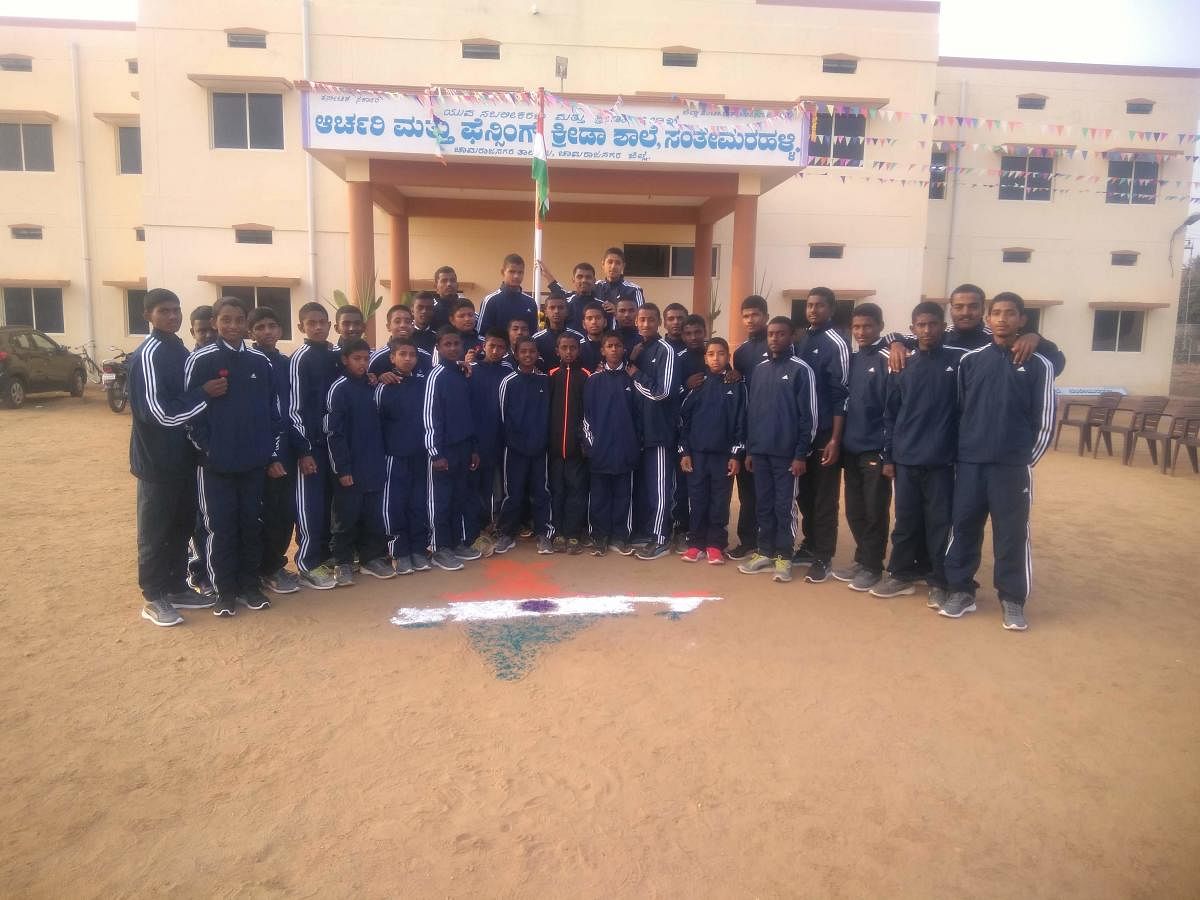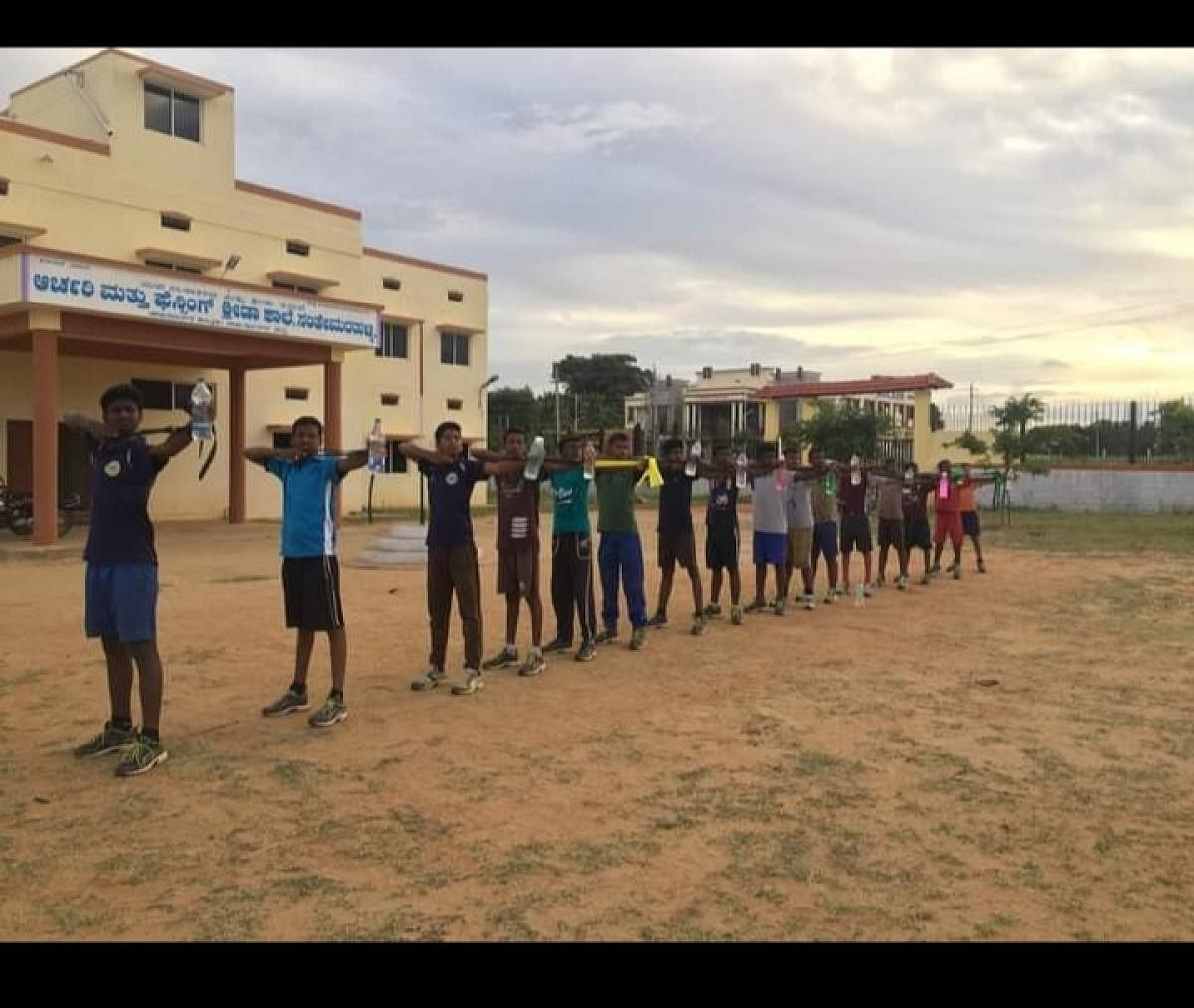

Even before the sun emerges from behind the Biligirirangana Hills, a group of 43 boys, clad in tracksuits rush to the ground for a 6.00 am assembly. After the morning prayer followed by the national anthem and a few instructions for the day, they disperse into two groups.
Post fitness training, a batch of 18 boys, equipped with bows and arrows, head towards the outdoor archery range, while the other 25 pick up a sword each in the indoor fencing hall.
The densely forested district of Chamarajanagar, around 170 kms from Bengaluru, is home to several tribal communities known to be physically stronger and fitter from generations of ingrained hunting and combat skills along with enduring socio-economic hardships.
It was for this reason that the Santhemarahalli Archery and Fencing Sports School was established in 2016 on a five-acre land by the Department of Youth Empowerment and Sports (DYES), Government of Karnataka.
A first-of-its-kind amenity in the State to identify and groom tribal children exclusively in these two disciplines.
The trainees who attend a nearby school during the day, belong to Soligas, Jenu Kurubas, Betta Kurubas and other tribal groups from Kollegal, Gundlupet, Yelandur taluks in Chamarajnagar along with a few from Chikkamagalur and Mysore districts.
Trials to identify children from this largely untapped talent pool are held once a year during January and February for students in eighth grade or above.
Lohith Vijay, former international fencer, who is the head coach at the facility, spoke of the two challenges the academy faces often.
Gaining trust of parents to allow their children for training and education and shorter stints for coaches, denying enough time to groom raw talent. Also, the lack of messaging fails to attract statewide aspirants for the trials.
“Although we have the liberty to conduct selections across the state and not just in Chamarajanagar, not many are aware of the trials as the message spread through word of mouth has limited reach. Many potential candidates miss out because of this hurdle,” Lohith told DHoS.
The centre provides everything from nutritious food to education and stay free of cost. “The boys belonging to economically backward communities value the facilities, making them more dedicated compared to city folk. Teaching them about logical thinking, strategising game plans and working on mental toughness are the aspects we need to fine-tune as mentors,” points out Lohith.
The facility - equipped with a boys hostel, mess, gym and a study room - is yet to set up a girls’ hostel, the sole reason for training only boys thus far. A proposal for a bigger fencing hall, staff quarters is being considered.
“The department agreed to our request of upgrading the archery range with a sunshade and floodlights. However, the pandemic has slowed down the construction process. Once completed, the centre can become one of the best in producing champions,” chips in Raghu Venkatesh, the head coach for archery.
Winning a national medal from the Sub-junior category (under-14) onwards fetches a scholarship of Rs. 3 lakh and Rs. 1 lakh for a state championship medal through the Scheduled Castes Sub-Plan and Tribal Sub-Plan (SCSP-TSP) scheme.
While the fencers have risen in the ranks by winning multiple medals so far in various age categories at the state and national competitions, the archers, who lag in tournament exposure due to delay in procuring equipment which arrived only in 2020, will soon follow suit, the coaches feel.
“The goal is to transform lives through sports, not just for winning medals, but help them find jobs and shape their lives in the future,” adds Lohith.
With 36 medals in fencing and 15 in archery to vie for at the Olympics, the sports school was recently identified as a Khelo India Centre for fencing. Archery has been surprisingly left out of the scheme.
While the intent of the programme seems to be headed in the right direction, the biggest drawback for the sports school here is that the coaches are appointed on a yearly contract which casts doubts about their job security. “Besides, expecting us to identify, groom raw talent, build a strong coach-athlete relationship and produce results in only one year are all practically impossible to achieve,” offers Lohith.